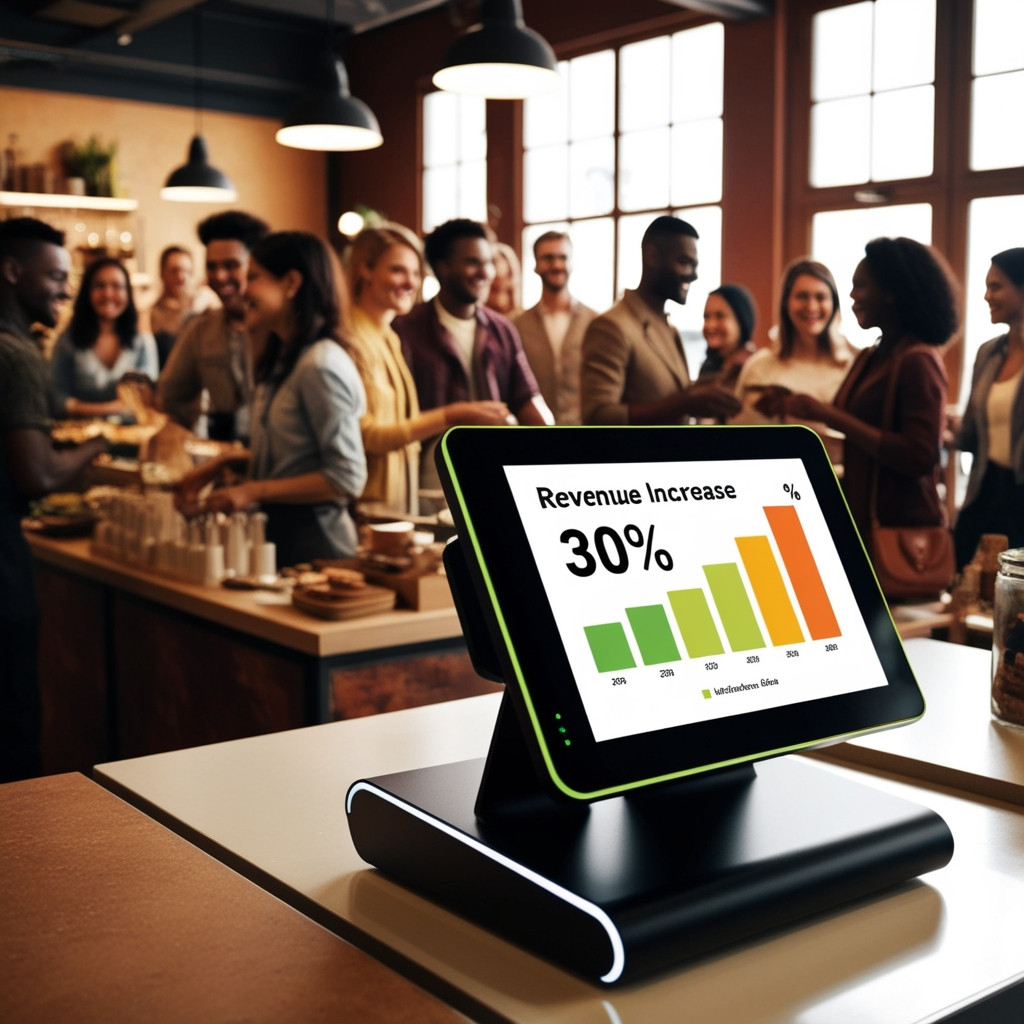How the Right POS System Can Increase Small Business Revenue by 30%?

A point of sale (POS) system is more than just a tool for processing transactions—it’s a complete business solution that can drive sales, enhance efficiency, and streamline operations. For small businesses, choosing the best POS system can lead to a revenue increase of up to 30% by optimizing sales processes, reducing errors, and improving customer experience.
In today’s fast-paced market, where consumer expectations are higher than ever, businesses must leverage technology to stay competitive. A well-integrated POS machine not only simplifies payment processing but also provides valuable insights, automates inventory, and helps build long-term customer loyalty. The right point of sale system is the backbone of a successful small business, ensuring smooth operations and maximizing profitability.
How a POS System Boosts Revenue?
1. Faster Transactions, More Sales
A POS terminal speeds up the checkout process, reducing wait times and improving customer satisfaction. Studies show that long lines and slow service drive customers away, but a fast, efficient POS system ensures seamless transactions, increasing daily sales volume.
A National Retail Federation report found that 86% of customers are likely to abandon a purchase due to long wait times. By investing in a high-performance point of sale system, businesses can prevent lost sales and create a positive shopping experience.
2. Inventory Management Prevents Lost Sales
A POS machine with real-time inventory tracking prevents stockouts and overstock issues. A Harvard Business Review study found that 43% of shoppers go to competitors when their desired product is out of stock. With automated stock management, businesses can prevent revenue loss and keep popular products available.
Additionally, businesses can set automatic reorder alerts, ensuring that best-selling products never run out, and capitalize on seasonal trends by adjusting stock levels proactively.
3. Data-Driven Business Decisions
Advanced point of sale systems provides insights into sales trends, customer preferences, and peak hours. By leveraging data, small businesses can optimize pricing, launch targeted promotions, and maximize profits.
With predictive analytics, businesses can also forecast demand more accurately, reducing waste and ensuring they are always stocked with the right products at the right time.
4. Increased Customer Retention & Loyalty
Loyalty programs integrated into a POS system encourage repeat purchases. A Bain & Company report found that increasing customer retention by just 5% boosts profits by 25% to 95%. POS-powered rewards programs incentivize spending and keep customers engaged.
Customers appreciate personalized experiences. A POS system with CRM (Customer Relationship Management) features can store purchase history, enabling businesses to offer tailored promotions, discounts, and exclusive deals to loyal customers.
5. Automated Sales & Accounting for Accuracy
Manual bookkeeping is time-consuming and prone to errors. A POS terminal automatically records sales, taxes, and expenses, reducing discrepancies and improving financial accuracy. This not only saves time but also helps businesses avoid costly mistakes.
Seamless integration with accounting software eliminates the hassle of manual data entry, streamlining tax reporting and financial management.
6. Omnichannel Selling Expands Your Market
A modern POS system supports both in-store and online sales, allowing small businesses to sell through multiple channels effortlessly. According to Statista, online retail sales are expected to surpass $7.3 trillion by 2025—integrating e-commerce with a POS system ensures businesses capture both offline and online revenue.
Having a unified inventory system across all sales channels prevents overselling or stock discrepancies, creating a smooth shopping experience for customers.
7. Employee Performance Tracking & Productivity
A POS machine can monitor employee sales performance, track working hours, and reduce fraud or theft. With better accountability, staff members are motivated to enhance their efficiency, leading to increased overall revenue.
Business owners can also use point of sale system analytics to identify top-performing employees and incentivize them, fostering a more motivated and results-driven workforce.
8. Seasonal & Promotional Sales Optimization
A POS system helps businesses optimize sales strategies for seasonal trends and promotions. By analyzing past performance, business owners can plan effective marketing campaigns, bundle offers, and discounts that drive more sales during peak periods.
Retailers who use POS analytics to adjust pricing and inventory strategies during high-demand seasons see a 20-30% increase in sales compared to those who do not.
Choosing the Best POS System for Small Businesses
When selecting the best POS system, small businesses should consider:
- Ease of Use – A user-friendly interface ensures quick adoption and fewer errors.
- Payment Flexibility – Accepts credit cards, mobile payments, and contactless transactions.
- Scalability – Grows with the business, allowing for additional features and integrations.
- Reporting & Analytics – Provides insights into sales, inventory, and customer behavior.
- Security – Ensures safe transactions with PCI-compliant processing and fraud protection.
Final Thoughts
Investing in the best POS system for small businesses is a proven strategy for increasing revenue, improving operational efficiency, and enhancing customer satisfaction. With the right point of sale system, businesses can streamline operations, maximize sales, and drive sustainable growth.
With the second quarter of the year approaching, now is the ideal time to invest in a POS machine. Many suppliers offer Q2 discounts, promotions, and bundle deals, making it cost-effective to upgrade.





